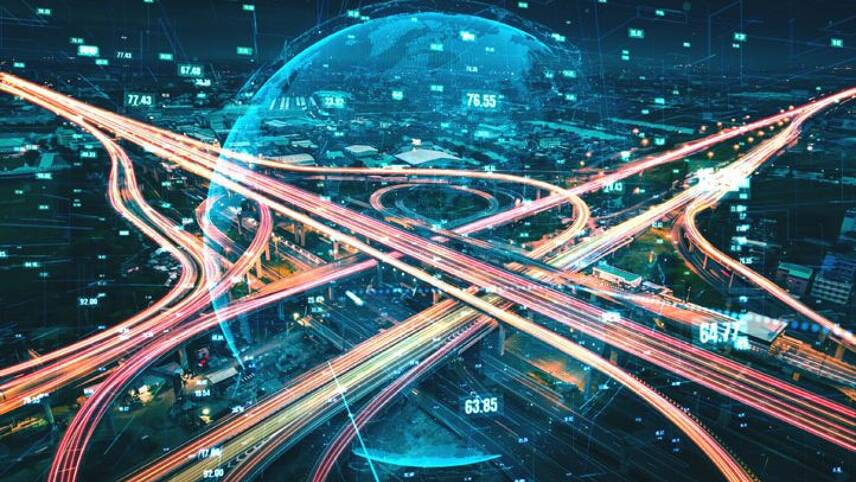Register for free and continue reading
Join our growing army of changemakers and get unlimited access to our premium content

Last year, transport was responsible for more emissions than any other sector in the UK. But 2020 was also the year the pandemic ground us all to a halt, as we stayed home and logged on rather than heading out in cars, trains, buses and planes. As a result, transport emissions fell by 20%. Of course, as we seek to build back better, we need to get back out there on our roads and on public transport – but in the last year, we’ve seen a preview of the power of connectivity to help decarbonise the UK.
Changing transport for good
As we look to reopen Britain, it’s clear that the way we work – and commute – has seen a major shift, with long-term potential for reducing our carbon footprint. In fact, our research shows that we could cut travel emissions by 14.3 megatonnes of CO2e a year if everyone who could, worked from home twice a week. This is just one example of how connectivity can enable new travel patterns, with a direct impact on the UK’s emissions.
But it’s not just about changing our habits: we can also use connectivity to introduce new ways of travel, reducing the numbers of polluting cars and trucks on our roads. Like connecting drones with sim cards and using them to make essential medical deliveries – helping to develop smarter, safer, greener supply chains that have no impact on road congestion and no increase in emissions.
Using tech to travel smarter
As we look to the (not so distant) future, digital tech will continue to drive change – and cut carbon – for the transport sector. This could include changing the way we travel to make it cleaner. Smart vehicles are a prime example: using sim connectivity, we can use sensors and stream data via 5G in real-time from one vehicle to another, or even between vehicles and infrastructure. This enables optimised travel patterns, which helps reduce idling and unnecessary emissions.
And it doesn’t stop there. Last year O2 announced the launch of the first commercial laboratory for 5G and satellite communications in the UK. The Darwin SatCom Lab can help businesses to explore next-generation connectivity solutions for connected and autonomous vehicles (CAVs). One proof of concept being tested at the lab tracks the CO2 emissions of autonomous vehicles using sensors. By using satellite imagery to see the areas vehicles are travelling through and monitor local biodiversity, the team is able to calculate the emissions savings of taking different routes based on carbon capture from nearby trees.
Navigating to net-zero
From smart cities to smarter working: a connected world is a decarbonised world. And it’s clear that digital connectivity can help us go further and faster towards a cleaner transport future.
COP26 Clean Transport Primer
edie’s COP26 Primer Reports are about seizing the green opportunity. Produced in the run-up to the official talks, this mini-series of reports are based on the five key themes of COP26: Clean Energy, Clean Transport, Climate Resilience, Nature-Based Solutions, and Climate Finance. This report examines approaches to clean transport.
This report examines how crucial clean transport is in delivering the net-zero transition and responding to the climate crisis. It also explores the role that COP26 will have in incentivising the shift to zero-emission modes of transport and how that will impact markets and communities moving forward.
From the enablers and accelerators to the global transport transformation, to the political challenges and consequences of failing to take a holistic approach to charging and infrastructure for shipping and aviation, this report acts as a timely state-of-play for global efforts to deliver a green recovery and kickstart the net-zero trajectory.
Click here to read the report.



Please login or Register to leave a comment.